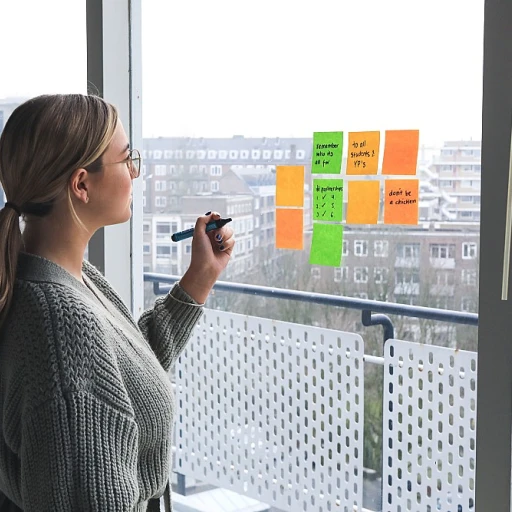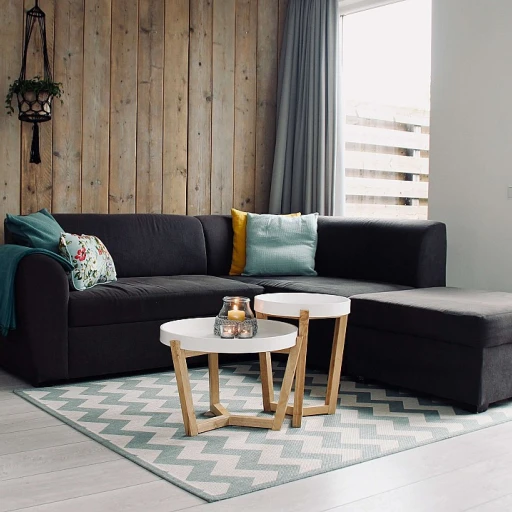
Understanding the fundamentals of sensory design
What is sensory design in digital campaigns?
Sensory design is about engaging the senses—sight, sound, touch, and sometimes even smell and taste—to create richer, more memorable digital experiences. In the context of digital campaigns, this approach goes beyond visuals to include audio cues, haptic feedback, and interactive elements. The goal is to trigger emotional responses and influence user behavior, making campaigns more immersive and effective.
Key components of sensory design
- Visuals: Color, typography, and layout are foundational, but motion graphics and micro-interactions add depth.
- Sound: Audio branding, subtle sound effects, and music can reinforce messages or guide user actions.
- Touch: On mobile devices, haptic feedback (like vibrations) enhances the sense of interaction.
These elements work together to create a multi-sensory environment that can boost engagement and retention. For example, a well-designed landing page might use soothing colors, gentle animations, and a soft notification sound to guide users through a process, making the experience both intuitive and enjoyable.
Why sensory design matters for engagement
Research shows that multi-sensory experiences are more likely to be remembered and acted upon. When users feel emotionally connected, they are more likely to interact, share, and convert. Sensory design is not just about aesthetics—it’s a strategic tool for building stronger connections between brands and audiences.
For those looking to deepen their understanding or assess the effectiveness of sensory elements in digital campaigns, exploring effective evaluation frameworks for design professionals can provide valuable insights and practical methods.
The impact of sensory elements on emotions and behavior
How Sensory Cues Shape Digital Experiences
In digital campaigns, sensory design goes beyond visuals. It taps into multiple senses—sight, sound, and even touch—to create deeper emotional connections. When users encounter a campaign that stimulates more than just their eyes, their engagement often increases. For example, subtle animations, ambient sounds, or haptic feedback can make an interface feel more alive and memorable.
Emotional Triggers and Behavioral Responses
Research shows that sensory elements can evoke specific emotions, which in turn influence user behavior. Warm colors may foster trust, while dynamic motion can generate excitement. Sound effects, when used thoughtfully, can reinforce actions and provide feedback, making interactions more satisfying. These emotional triggers are not random—they are rooted in psychological principles and tested user responses (advantages of design segmentation).
- Visual cues: Color, contrast, and movement guide attention and set the mood.
- Audio cues: Sounds can calm, alert, or reward users, enhancing recall and engagement.
- Touch feedback: On mobile devices, vibrations or tactile responses can confirm actions, making digital interactions feel more tangible.
Building Trust and Loyalty Through Sensory Design
When sensory design is consistent and intentional, it helps build brand recognition and trust. Users who feel emotionally connected to a digital experience are more likely to return and recommend it. This is why leading brands invest in refining every sensory detail, from the tone of notifications to the micro-interactions within their platforms. Ultimately, sensory design is not just about aesthetics—it is a strategic tool for influencing perception and driving engagement.
Challenges in integrating sensory design
Barriers to Seamless Sensory Integration
Integrating sensory design into digital campaigns is not as straightforward as it may seem. While the fundamentals and emotional impacts of sensory elements are well established, several practical and strategic obstacles can hinder their effective use. Understanding these challenges is crucial for anyone aiming to boost engagement through sensory-driven experiences.
- Technical Limitations: Not all digital platforms support advanced sensory features. For example, haptic feedback or spatial audio may require specific hardware or software compatibility, making it difficult to deliver a consistent sensory experience across devices.
- Accessibility Concerns: Sensory design must be inclusive. Overreliance on visual or auditory cues can alienate users with disabilities. Ensuring that sensory elements enhance, rather than hinder, usability is a constant balancing act.
- Consistency Across Touchpoints: Maintaining a unified sensory identity across multiple channels—web, mobile, social media—can be challenging. Variations in screen quality, sound systems, and user environments affect how sensory cues are perceived.
- Resource Constraints: High-quality sensory assets, such as custom animations or immersive soundscapes, often require significant investment in time, talent, and technology. Smaller teams may struggle to justify or execute these enhancements.
- Measuring Impact: Quantifying the effect of sensory elements on engagement and behavior is complex. Traditional analytics may not capture the nuanced ways sensory design influences user perception and action.
For those working with {{ product_part }}, these challenges can be even more pronounced, as product-specific constraints may limit the range of sensory enhancements possible. Addressing these issues requires a thoughtful approach to both design and implementation.
For a deeper dive into how feedback and iteration can help overcome these barriers, you might find this analysis of feedback in design education particularly insightful. It highlights the importance of continuous learning and adaptation in the face of evolving sensory design challenges.
Strategies for effective sensory design
Building a Multisensory Experience
To create digital campaigns that truly resonate, it’s essential to go beyond visuals. Sensory design means considering how sound, touch, and even motion can work together with images and text. For example, subtle background music or interactive haptic feedback can make a campaign more memorable and engaging. The key is to align these sensory elements with your brand’s message and the emotions you want to evoke.
Balancing Consistency and Innovation
Consistency across platforms is crucial. Sensory cues—like color palettes, sound logos, or tactile interactions—should feel familiar to users, reinforcing your brand identity. At the same time, don’t be afraid to experiment. Testing new sensory elements in limited campaigns can reveal what works best for your audience, helping you refine your approach without risking your overall brand perception.
Practical Steps for Implementation
- Start with research: Understand your audience’s sensory preferences and cultural context. What sounds, textures, or visuals are most likely to connect with them?
- Prototype and test: Use prototypes to experiment with different sensory combinations. Gather feedback early to identify what enhances engagement and what distracts.
- Measure impact: Track metrics like time spent on page, interaction rates, and emotional responses. This data helps you fine-tune your sensory design strategy.
- Collaborate with specialists: Work with sound designers, UX experts, and accessibility consultants to ensure your sensory elements are effective and inclusive.
Accessibility and Inclusivity
Effective sensory design considers everyone. Make sure your campaigns are accessible by providing alternatives for users with sensory impairments. For example, include captions for audio, offer visual cues for sound-based interactions, and ensure tactile feedback is optional. This approach not only broadens your reach but also demonstrates your commitment to inclusive design.
Case studies: sensory design in action
Immersive Campaigns That Captivate Audiences
Brands are increasingly turning to sensory design to create memorable digital experiences. By leveraging sight, sound, and even touch through haptic feedback, campaigns can connect with users on a deeper level. For example, automotive companies have used dynamic visuals and immersive soundtracks in their online configurators, allowing users to visualize and "feel" the car before visiting a showroom. This approach not only increases engagement but also strengthens emotional ties to the product.
Retail: From Clicks to Sensations
In the retail sector, sensory design has transformed online shopping. Fashion brands often use high-resolution imagery, interactive 360-degree views, and subtle background music to replicate the in-store experience. These sensory elements help reduce hesitation and encourage users to spend more time exploring collections. According to a Nielsen Norman Group study, emotional engagement through sensory cues can significantly influence purchasing decisions.
Food and Beverage: Stimulating the Appetite Digitally
Food and beverage campaigns have successfully used sensory design to trigger cravings and drive conversions. Vivid photography, slow-motion videos of ingredients, and sound effects like sizzling or pouring can evoke taste and smell memories. These sensory triggers are proven to increase click-through rates and social shares, as users are drawn to content that stimulates their senses.
Entertainment: Building Anticipation Through Sensory Teasers
Streaming platforms and movie studios often employ sensory design in their digital promotions. Teaser trailers use a mix of striking visuals, suspenseful music, and even interactive elements like vibration on mobile devices to build anticipation. This multisensory approach not only boosts engagement but also encourages users to share content, amplifying campaign reach.
- High-quality visuals and soundtracks enhance emotional connection
- Interactive elements like haptic feedback increase user involvement
- Sensory cues in digital campaigns can drive both engagement and conversion
These real-world examples highlight how sensory design, when thoughtfully integrated, can transform digital campaigns into engaging, memorable experiences that resonate with users and drive measurable results.
Future trends in sensory design
Emerging Technologies Shaping Sensory Experiences
Digital campaigns are evolving rapidly, and sensory design is at the forefront of this transformation. New technologies are enabling brands to create more immersive and interactive experiences that appeal to multiple senses. For example, advancements in haptic feedback allow users to feel subtle vibrations or textures through their devices, adding a tactile dimension to digital interactions. Similarly, spatial audio is being used to guide attention and evoke emotions, making content more engaging and memorable.
Personalization and Adaptive Sensory Elements
One of the most promising trends is the use of data-driven personalization in sensory design. By analyzing user preferences and behaviors, brands can tailor sensory elements—such as color schemes, soundscapes, or even scent cues—to individual users. This approach not only increases engagement but also fosters a deeper emotional connection between the audience and the campaign. As discussed earlier, sensory elements have a direct impact on emotions and behavior, and personalization amplifies this effect.
Integration with Augmented and Virtual Reality
Augmented reality (AR) and virtual reality (VR) are becoming more accessible, offering new possibilities for sensory design. These technologies enable the creation of fully immersive environments where users can interact with digital objects using sight, sound, and touch. Brands are leveraging AR and VR to simulate real-world experiences, making digital campaigns more impactful and memorable. For instance, virtual showrooms or interactive product demos can engage users on multiple sensory levels, driving higher engagement rates.
Accessibility and Inclusivity in Sensory Design
As sensory design becomes more sophisticated, there is a growing emphasis on accessibility and inclusivity. Designers are increasingly aware of the need to create experiences that are enjoyable for everyone, including individuals with sensory impairments. This involves providing alternative sensory cues, such as visual descriptions for audio content or tactile feedback for users with limited vision. Addressing these challenges ensures that sensory design remains effective and ethical as it evolves.
Continuous Measurement and Optimization
With the integration of advanced analytics, brands can now measure the impact of sensory elements in real time. This allows for continuous optimization of campaigns, ensuring that sensory design strategies remain effective and relevant. By monitoring user engagement and feedback, designers can refine their approaches and stay ahead of emerging trends in the digital landscape.










-large-teaser.webp)



